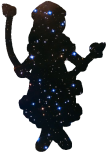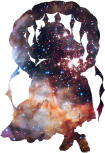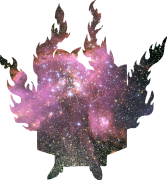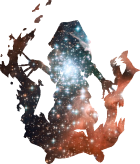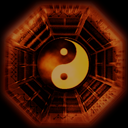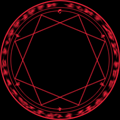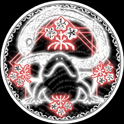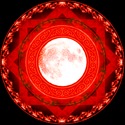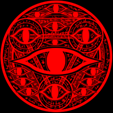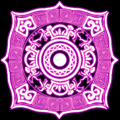Review: Essence of Shinto
Ancient Shinto or Renegade Shinto?Essence of Shinto is a book written by Motohisa Yamakage. Originally published in Japanese as Shinto no Shinpi in 2006, it received an English translation in 2012. While many English-language books on Shinto either focus on the historical and cultural context of Shinto – or then offer relatively dry instructions of ”correct” forms of worship – the Essence of Shinto is essentially written for the spiritual seekers. While the book is extremely fascinating and it's interesting to see the perspective of someone who very much a true believer, the book is dragged down by some eyebrow-raising features of the author and lineage where it comes from.
Apparently coming outside of the Shinto orthodoxy, the author was the 79th grandmaster of Yamakage Shinto. Depending on who you ask, it's either a Shinto-adjanced new religious movement or a lineage of koshinto. Koshinto purports to be a reconstructionist form of Shinto that traces it's lineage back to times before the arrival of Chinese influence. However, as all known written materials in Japanese history are from times after Chinese contact, it is impossible to verify the claims made by these lineages.
The Yamakage family's own historical provenance is missing from the written and records. While the translators of the book mentioned some of Motohisa's Japanese-language writings, they convenient gloss over the Yudaya no sekai shihai senryaku or Judaism's Plan for World Domination. Things like these are why it's always important to research the backgrounds of the lineages and people you study – though I understand the irony of that coming from some anonymous person online.
Putting all that aside, the book is rather fascinating in many ways and the author's strong conviction makes it remarkably different from more academic and orthodox Shinto texts in English that I've read. The book presents the existence of the spiritual aspects of reality and kami as an unquestionable true fact. The author scolds the Shinto orthodoxy for lacking faith and spiritual practice, which he sees crucial to work as a priest.
Beyond Japan, Yamakage sees that Shinto has universal elements to offer, and that every culture kind of invents it's own form of ”Shinto”. The Shinto that is called such is the native faith of the Japanese, but similar underlying ideas, shaped by accumulated experience, culture and local environment can be found everywhere in the world. Emergence of new religious movements and Western interest in things like the Gaia hypothesis is taken as a (in my opinion, justifiable) proof that people are getting tired of perceiving only material aspects of reality and that they hunger for a deeper, more spiritual connection with the surrounding world.
The way to fulfill this hunger is perhaps surprisingly human-centric. Humanity, along with everything else, are children of the kami, and ultimately children of the original kami of the universe called daigenrei. Therefore, by taking up practices that allow people to get in touch with their naohinomitama, inner kami, we are able to connect back to daigenrei and therefore the world surrounding us.
Before we take a look at the suggested training regimen (and it's potentially non-native and non-ancient influences), it's worth going over the context that the book lays down for the practices.
Defining Shinto through the ”no”
Yamakage defines Shinto through the five ”no”. Shinto has no founder, no doctrines, no precepts or commandments, no idols and no organization. This series of ”no” is contrasted with the conventional Western understanding of religions as something that have founders, doctrines, precepts and commandments, idols and organization. Coming from an initially non-religious background, I have found this conventional understanding limited and not really representative of reality, but the Japanese seem to have been engaged in a kind of struggle against this definition.
It should be noted that Shinto as a whole does indeed not have a single founder, rather emerging organically from the traditions present in Japan. There have been founders of lineages of people have canonized certain holy texts, but they are not seen as founders. These holy texts do not form doctrines in Western religious sense, and rather Shinto has a kind of shared understanding of practices and concepts that gets verbalized differently among different lineages. Exact way to perform things like purification and offerings and prayers also varies. One can however find a shared philosophical core at the heart of it all.
Shinto does not have detailed commandments or precepts to live by, and neither does it have an idea of ”sin” or ”salvation”. Shinto however does have taboos, certain rules for special occasions such as interacting with kami and a kind of body of advice such as respecting the kami and elders. Interestingly enough the author links Shinto ideas about ”good” and ”evil” to a kind of aesthetic sense, where ”straightness” also representing honesty and clarity is good, and ”curved” (perhaps twisted?) represents unclear, deceptive, evil, even neurotic qualities. It's stated that a spirit called magatsubi causes people to ”bend” and assume these undesirable qualities.
According to Yamakage, Shinto originally did not have religious idols, and the various goshintai and objects at shrines were not representations of kami, but rather things that would attract the kami down into the world, akin to a kind of spiritual antenna. The kagami mirrors are seen as ”radiant, reflecting light bodies” that reflect the spirit of the kami, but are not their representations. An amusing aside for Touhou fans is that there exists a type of sacred object called a hakuhei.
As for no organization, it is very true that Shinto lacks the kind of central organization that many religions do. There is the Jinja Honcho, a voluntary association of shrines which is the closest to ”official” Shinto there is. Many however see it as a kind of successor to state Shinto, and nowhere near all shrines belong to it. There are of course various organizations that run the shrines, with the largest of them being quite the operation.
These five ”no” have been both a strength and weakness. On the other hand Shinto has been able to be very adaptive, but at times it has also been very susceptible to influence from external factors, such as other religions, the government or trends towards materialism. Yamakage presents that there is a kind of ancient, pre-influence Shinto that represents that ”essence of Shinto”, but as stated before, the historical basis of these claims is hard to prove.
Shrines were originally not buildings
Shrines strongly come into mind for many when thinking about Shinto, but according to Yamakage (and the conventional understanding of Shinto too), the earliest holy sites were natural sites. In fact, there are still great many holy natural sites in Japan, and many shrines are built near them. Yamakage finds mountains and Iwakura rocks particularly noteworthy, and recounts a little miracle related to the discovery of a forgotten Iwakura rock in the grounds near a shrine.
In Yamakage's understanding, these are places where the kami can descend into the world. Human-built shrines are in a way simply temporary housing for the kami. It's stated that a that much more grander versions of these places exist in the divine kami world. The kami might not always be present in a shrine, and a guardian spirit in the shrine can act in their stead and pass forwards the worshipers prayers. While not explicitly stated, this seems to indicate that the kami to reach out towards are not the yaoyorozukami or kunitsukami, as the kami to be reached out are described as descending downwards, towards places and items that act as a kind of ”spiritual antennas”. This could of course be a misreading a less literal process of ”descending”.
According to Yamakage, poorly operated, faithless shrines can become abandoned by kami. It's not that the kami ”die” by lack of faith, but rather, to quote Yamakage, ”the power of divine light increases by receiving human reverence”. When a shrine becomes abandoned by the kami, it can be overrun by evil spirits who will instead latch on to the visitors and torment the psychicaly sensitive. Yamakage cautions against getting ofuda on a whim and praying at decrepit shrines. I've encountered this taboo against praying at abandoned shrines from other sources, so this might be a widespread belief.
Misogi, harai and kegare
Acts of purification are considered to be of great importance in Shinto, and Yamakage makes no exception. He writes about the misogi purification at lenght. He identifies four types of misogi: misogi with water, purification with haraimono, breaking off contact with unclean spirits and keeping thoughts clean. The end result to strive for is seimei seichoku, a ”clean and bright” and ”right and straight” state of being. Seimei is a clean and happy attitude of inner mind, and seichoku is right action and behavior as well as a pro-social attitude.
The water misogi has it's origins deep in Japanese mythology, as Izanagi no Mikoto performed the first misogi after returning from the underworld of yomi. According to Yamakage, misogi was orginaly performed in the ocean, following Izanagi no Mikoto's examples, particularly at spots where rives flow into ocean. This mixing of waters was seen to have particular powerful symbolism related to renewal. In the mythology, a multitude of kami were born from the first act of misogi, some of the related to purification, some of the uncleanliness. For Touhou fans, it's notable that this host of kami included several deities whose name includes ”Watatsumi”, as well as the ”Michimata no Kami” who has been speculated to be potential influence on the representation of Chimata-sama.
The second type of misogi includes purification with haraimono, and this can be a purification of either people or places. Harainusa and shimenawa ropes are seen as haraimono that suck out bad energies and hostile low level spirits, called mononoke. Yamakage sees proper disposal of these haraimono as important, as otherwise the absorbed negative energies can bleed back out.
Yamakage is indeed and ardent believer in the reality of spirits, and sees that it's important for people to cut off contact from various low level spirits. They can bring all kinds of harm to people, and acts of misogi remove them and the kinds of negative energies and ”bad vibrations” that attract them. There is a class of negative spirits that are attached to particular families, while some essentially drift freely. Some people are sensitive enough to perceive these spirits as phantasmal presences or feeling them as nausea and chills. Yamakage's ideas and descriptions of hostile low level spirits are really close to modern Western esoteric lore. Whether this is convergence, influence or choice of language is impossible to say.
The last category of ”keeping thoughts clean” is interesting because it is not quite what one would expect. Rather than being about conventional ”bad thoughts” (though perhaps those are also included), a certain kind of scattering of thoughts is seen as a kind of ”impurity”. The way to counteract is to re-center oneself by focusing on the tandian, a spot in the lower stomach. It's here where the ancient, pre-Chinese influenced koshinto stars to show unexpected Chinese influence.
Harai is conventionally seen as another form or type of purification, but Yamakage finds additional layers of meaning to it. Harai can mean purification in the sense of ”shaking off the dust”, but etymological roots connect it also to ideas of ”mutual obligations” and expansion, growth and renewal. Taking together, one arrives at an idea of shaking off ”the dust” which obscures mutual obligations which are conductive to growth and renewal.
Yamakage lists six ways to perform harai. It can be done via celestial light, words, sound, earth fire and the use of ”human substitutes”. The harai with celestial light is something that kami can do to humans, and which can be facilitated with rituals. The harai with words is the receital of purification prayers like the haraekotoba and their mystical effects. Harai with sound is done with sacred music, which plays a big part in Shinto rituals. Harai with earth includes things like using earth from shrines and salt, and harai with fire is exactly that. The use of ”human substitutes” is the most interesting category, as these include using hitogata, human figures made from clay, paper or bark to absorb kegare from humans.
This kegare is here seen as a ”semi physical substance”, a kind of metaphysical dirt created by human errors and uncleanliness that can affect the ”collective unconscious” and ”universal memory”. Purification is seen to remove kegare and to serve as a kind of ”reset” for the person being purified. This purification is said to facilitate the process of attuning to the human kami nature and to enable growth and life.
One spirit, four souls
The idea of one spirit, four souls or ichrei shikon is very central to Yamakage's idea of Shinto. Basicaly all things, humans, kami, various animals and other phenomena re seen to have four souls and one spirit. The one spirit is the naohinomitama, a divine child of the original kami of the universe, the daigenrei. The four souls are divided into two categories, manifest and hidden. The manifest souls are the rough, wild, coarse and unruly aramitama and the harmonious and calm nigimitama. The hidden are the ”happy” sachimitama and the mysterious kushimitama.
Shinto orthodoxy recognizes the four souls too, in the context of kami, where the aramitama is seen as a kind of a wrathful, unruly, damaging side of a kami. Here however, aramitama is not always problematic. It can be a force of destruction, but also clears way for new things and change. As the four souls are present everywhere, this includes the very universe itself.
In the case of the universe itself, the shikon are as follows:
Kushimitama: work of the original power, stimulating creativity and birth, transofrming ideas into form.
Sachimitama: harmonizing the universe.
Migimitama: work controlling the activity of the universe, giving form to generated things, making energy permeate all things, and giving motion.
Aramitama: manifesting the individual and physical world and maintaining the individual organism. Here the ”coarseness” is more literally the coarsest levels of matter. Aramitama is also destruction to make way for the new.
The four souls manifest in humans on multiple. They impact health and intellectual and spiritual capabilities, happiness and so on. It's seen that there can be deficiencies and imbalances of the souls, which leads to pathologies. For example, excess aramitama will lead to coarse, impulsive and antisocial behavior, while lack of it leads to passivity and lack of vitality. Strong kushimitama makes people spiritually receptive, but excess of it leads to neurotic, even psychotic behavior with associated physical health problems. These ideas are a perfect encapsulation of the kind of Eastern thought where the physical, mental and spritual are seen as an inseparable.
Yamakage points out there are some correlations between this idea of four souls and the Chinese and Western ideas. The Chinese idea of humans having yang (kon) and yin (haku) souls has influenced Japanese thought (and inspired the character of Youmu Konpaku...). Yamakage sees the hidden souls correlating to kon and manifested souls correlating to ying. With Western thought, he finds similarities to how Theosophists conceptualized people having a kind of layered body with increasingly subtle elements. Lastly, he sees a correlation with the four classical elements, where earth is aramitama, nigimitama is water, sachimitama is fire and air is kushimitama.
An interesting thing to note here is that Yamakage seems that all things are made up of ”sparks” of divine energy, shaped by these single spirit and four souls. Humans are 350-500 of these ”sparks”, complex animals 100-300, simple animals are 50-100, less than 50 sparks make up plants and less than 30 minerals.
The afterlife
Within the Japanese society, a kind of division of labor exists between Shinto and Buddhism where Buddhism takes care of matters related to funerals, Yamakage wishes to present his views on the afterlife. Humans have the potential to become fully realized kami, and this process continues even after death.
Yamakage lists four traditional Japanese ideas about after. First is the Toyonokuni, ”the eternal land”. This is seen to be a place where the soul-spirit of reikon receives eternal life and new life is generated. Ancient Japanese had an image of this land being across the ocean. The second is the kakuriyo, a kind of astral hidden world is is thought to be a mirror of the material world. Third is the yomi no kuni, a subterranean underworld that, according to Yamakage, ”carries strong sense of continental Asian origin”. The fourth is the idea of souls traveling to mountains where they become kami who watch over humans.
Early ideas are more ”horizontal” where dead went over the sea or into mountains, while newer ideas are more ”vertical” where there are ”upper” or ”lower” realms, perhaps owing to Buddhist influences. The worlds of the dead are not seen as being separate in either case, but rather mingling with the world of the living.
Yamakage himself says that the human spirit can go to a variety of places after death, from the world of the kami to yukai, a ”lower astral world”. The spirits continue their journey and development in the afterlife, but they need guidance and protection and facilitation of a successful transfer. Funeral services and spiritual practice during life are a way to ensure this process.
Ideas about afterlife are also tied to the idea of the four souls. After death, depending on circumstances, aramitama governing physical body dissolves fast, while nigimitama can linger on Earth longer. Sachimitama and kushimitama go the higher planes, but their progress can be impeded by impurities acquired during life. Victims of sudden and tragic deaths create stronger lingering presences on Earth, as their souls don't fully separate.
Lastly, Yamakage writes that Buddhism likely took over death related duties in Japan due to belief that decomposing bodies release kegare. This was an arrangement of convenience. The surprisingly strong focus on afterlife might be a very conscious attempt at getting to present the Shinto views on life after death and the shake the consensus.
Chinkon, furitama and other forms of spiritual practice
Chinkon, settling of the soul, is a term for Shinto spiritual practice, and a substantial chunk of the book is dedicated to Yamakage's idea of it. It's here that very likely Taoist influences comes to surface. The ”settling of the soul” here is described as a way to balance the four souls of a person. This balancing process is said to lead to improvement of spiritual, mental and bodily functioning, and to facilitate a kind of conversation with your inner kami.
Yamakage writes that without settline the souls and making contact with the naohimitama, fruitful spiritual practice is difficult. Contact with the inner kami is said to facilitate a path to self-realization of one's own kami nature, which facilitates a connection to the world at larger. Yamakage writes that the individual is a single scene of continuous life history in the eternal universe that has inherited particular characteristics. Making contact with the inner kami nature is said to allow one to perceive how all ultimately comes from the original kami of the universe, the daigenrei, manifesting in an interconnected web of life.
This settling of the souls is achieved by a wide variety of practices, including attempting to bring full attention to the tandian. This is an energetic center in the body located at the lower stomach, and it features extremely prominently in a wide variety of Taoist practices. The reasoning given is similar to Taoist ideas: the human souls, or consciousness, is normally scattered around. By bringing at into a cohesive state around the dantian spiritual progress is made. Here it is the balancing of the soul and calming of the mind. This is achieved with a meditation that is reminescent of zazen, which was likely influenced by Taoist meditation practices.
Another practice is the furitama or furutama, ”shoul shaking”, which is described as the pouring down of spiritual strength by the kami. There is a very vague description of the process itself, and it's said that advanced practitioners can kind of start it by itself. The effects are very dramatic, resulting in kamigakari, a kind of kami possession which can result in dramatic body contortions and powerful energetic experiences. Some of the descriptions are reminiscent of Percival Lowell's dramatic accounts of possessions in Japan. This procedure is not recommended for those of ill health, and there are instead lighter versions for such people.
There are also instructions for what Yamakage considers a proper misogi shower, breathing excercises which are compared to qigong and pranayama as well as techniques for achieving ”one thought, one mind”. This is essentially a meditative process facilitated done via chants like the ”Hi Fu Mi Yo” and ”Five Great Vowels”. There's also a prayer technique called the goten gassho, which is harder to characterize, but it is essentially said to draw down celestial energies.
Ultimately, the aim is to establish contact with the inner kami. This enables the person doing the practice to represent questions to his or her naohinomitama, which is said to possess ”great wisdom”, owing to it's nature as a child spirit of the original kami of the universe. Yamakage warns that it's possible for people to confuse ”worldly thoughts” or influence of low spirits with the words of the inner kami.
Yamakage states that the practice will generate noticeable changes in how the person carriers themselves in the world. In short, the practice should make for a ”well-formed and fully developed character”. The practice is also stated to make one more psychically sensitive, and that those with the sensitivity can detect subtle signs like a kind of faint inner luminosity around the head and shoulders coming from other practitioners. Yamakage also states that while the practitioner might experience all kinds of unusual experiences and go to ”other realms”, these experiences are meaningful only in the context of ”harmony of all being”.
Prayers
There are also instructions for prayer, because according to Yamakage, well done prayer can be a form of chinkon practice. Prayer should be done like ”your yearning for kami flows from the bottom of your soul”. He states that if you pour out abundant love and respect for the kami, they will hear the prayers. However, this effort needs to be focused, and in a way come from the inner kami nature of the person.
Yamakage states that repetition, listening to one's own voice and visualizing the kami (he suggests a ball of light) are ways to make your prayer more focused. He also says that the kami do not listen to egoistic prayers, and that answers and results can come in unexpected ways. In a way person should align themselves with the kami, commit to them and surrender to their care. Prayer can according to him become a rapturous experience, where people can feel ”waves of love, harmony, truth and peace” and hear ”sound like a golden bell”.
Yamakage also speaks of another type of prayer that is kind of a pledge to yourself and ”demonstration of the power of your own spirit-soul”. This is more aimed at wish-fulfillment and goal-achievement, and requires complete belief and confidence in the success of attainment.
A final technique is the ”mirror prayer”, which is very simple. In it, the practitioner sits in front of a mirror and looks at it calmly and quietly. After a while they bow and say in their native language ”thank you very much”. This process is intended to fuse together the ”kami mirror” and ”my mirror” and to make the practitioner realize that the mirror reflects their inner kami.
Closing thoughts
What to make of this all?
That is a question I struggled with after reading the book and doing research in to Yamakage Shinto. On one hand, there can be reasonable suspicions about claims relating to the history of the lineage and publications that go outside religious literature. Koshinto itself might be an impossibility to reconstruct, and the suggested practices show in my opinion very clear Taoist influence. One could of course think that there is a Japanese philosophical/religious core, and methodology adapted also from other sources, but it strikes me somewhat strange. There is also something about the book that strike me as bordering as an advertisement for a 100-day course they were – perhaps are – offering. There is nothing fundamentally wrong about this either, but I have creeping suspicions about this all.
Nevertheless, there are ideas in there that are in line with other sources that I have read about Shinto. The idea that basically everything, humans included, is a kami is very much the Shinto consensus. Humanity's connection to both heavenly and earthly realms is also accepted. The idea of universe as a kami is however outside of the orthodoxy, if there even if such a thing, though it does appear in some Shinto-derived religions, like Konkokyo. Even if such an idea would not be part of Shinto orthodoxy, it does not mean that a ”kami of the universe” wouldn't exist. There's some elements of the book which feel like they come from genuinely very, very old, if not ancient sources. The exact same descriptions of various objects being kind of ”spiritual antenna” appears also in Lowell's Occult Japan, which predates this book by well over a hundred years.
The practices, even if derivative, might be very effective for all I know. ”Chinkon” is also not invented out of whole cloth, but part of established Shinto terminology. For example, the English materials from Tsubaki Grand Shrine (which I should write about) also talk of furitama and chinkon and have their own ways of doing it. Some of the given advice seems very common sense – pray like you mean it, try to connect to the part of you that is connected to everything.
Further note about some of the practices is that the idea of ”talking to your inner kami nature” is extremely close to certain Western esoteric ideas. These include the concept of the daimon and the guardian angel and practices aimed at getting in contact with these forces. This is the first time I have come upon such in East Asian materials, though one could argue things like ”Buddha nature” and the sagely, immortal characteristics Taoist practices try to cultivate could be conceptualized along these lines too.
Part of me is wondering if it explicitly influence from Western ideas. The history of Western esoteric ideas in Japan is – in English – an unwritten one, but I have repeatedly stumbled upon fascinating breadcrumbs. It appears that Theosophy had a huge impact in Japan, and this book explicitly refers Theosophist subtle body ideas. The idea of wish fulfillment through total conviction is core of Western ideas about manifestation, and frankly a slightly troubling addition to the practices that otherwise scorn “worldly thoughts”.
If the practices and ideas truly had Western influence, it would be a quite marvelous thing in itself, a strange, renegade, esoteric, tantric form of Shinto, freely taking from all directions, now wanting to give itself back to the world...
Perhaps most of all the book is fascinating. With it's mentions of new religious movements (which this book in itself might represent too...), the spiritual hunger of the people and a number of things that feel very Japan-specific – funeral practices, the ”true nature” of things like shrines or misogi – it feels like it's part of a dialogue and we can not hear the other partner. The devout, polemic nature is something I have rarely seen in English Shinto literature, a kind of firebrand nature despaired at people abandoning and forgetting the kami, and perhaps worst – that they too are part of this kami nature.
It's also fascinating how small religious communities can have a disproportionate influence outside of their native land through sheer determination and devotion in making themselves heard in languages other than their own. Falun Gong is perhaps the most notorious example of this all, but for example Zen owes much of it’s outsized popularity in the West to the efforts of a single man, D.T Suzuki.
When it comes to the training regimen described in the book and it's end results, what does it speak of the efficacy of it all and the possibility of contacting this kami nature that the author would retort to writing about things which are (hopefully!) nothing but paranoid fantasies is another thing. Would inventing or keeping up a fabricated family history be ”straight” and ”clean” behavior, and if not, what does it speak of this all to keep sustaining such a mythology? This book raises very difficult questions and becomes a very difficult to mirror to look at. There are so many things in there which simply feel true, and yet...
This is an extremely challenging one for me, mostly because there were so many little things I have experienced that were written about in this book. The idea of kami purifying people with divine light, the impact of negative spirits and how they are drawn to something that would in Shinto be conceptualized as ”kegare”, using a ”human substitute” to help in removal of this kegare, the kami being able to hear your prayers if they are made with love and devotion, the kami responding to visualization and appearing as spheres of light, and furthermore, these spheres of lights being inside us too, inside everything, these are all things I have myself experienced too.
There is a message in this book which is essentially that ”you can make your own Shinto”. This does not mean just doing anything, but carefully understanding that hard to explicate ”essence” of it and then acting within the framework of your culture, history and surroundings in accordance with it. Whether Yamakage has done a good job in doing such and if I myself am anywhere close to understanding this ”essence” is a different question. Whatever the case, Yamakage is not the only one to advance the idea that ”Shinto” can be more than just the ethnic religion of the Japanese, even though such voices are very much in the minority.
I truly, strongly feel, based on my research not limited to this book, that there is something really, truly, fundamentally, universally true in how Shinto conceptualizes the world. In trying to grasp this truth, we may find ourselves coming face to all kinds of human shortcomings, mythologies and narratives. What would be the Shinto response to it all? Yamakage would probably say to ”not to get too caught up in words”.
Perhaps it is possible to perform a kind of ”misogi” and ”harae” on a text by reviewing it, sifting the good from the bad, the myth from the reality. Perhaps this review has been just that, an attempt at ”setting it straight”.
This idea of ”you can make your own Shinto” of course raises some interesting questions.
What happens when your culture is conditioned by unfathomable hyperconnectivity that has allowed me to access this book and you to access this review, allowed us to form strange distant bonds over culture and ideas from faraway lands?
What happens when your history finds itself as at a junction, where the old world is struggling to die and nobody knows what the future will look like, and as the old order crumbles, what has been banished to the edges is now moving towards the core?
What happens when your natural environment has become largely artificial and you spend most of your time in faraway virtual realms of desire and thought?
What would Shinto born out of such culture, history and natural environment look like?
Has it perhaps been already realized?
